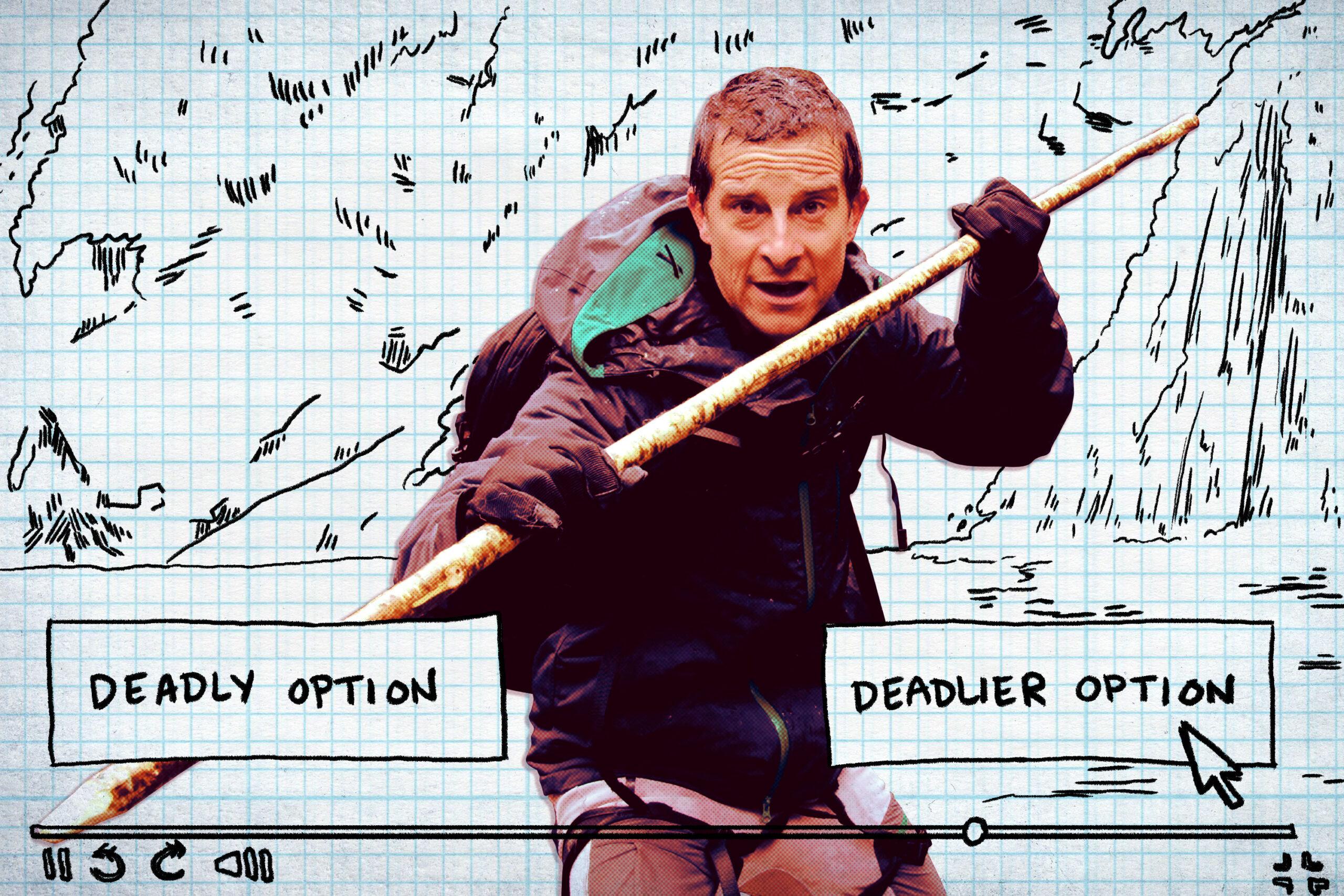
After Netflix dropped the interactive Black Mirror special Bandersnatch at the end of 2018, it was only a matter of time before the streaming service unveiled even more programming like it. Including more choose-your-own-adventure options into the company’s digital catalog is just another step in Netflix’s quest to dominate all of your entertainment needs. Its next interactive series arrived on Wednesday with the Bear Grylls–hosted You vs. Wild, which allows viewers to immerse themselves in Grylls’s adventures, making choices for the seasoned survivalist as he journeys through myriad harsh environments spanning the globe. It’s an inspired idea with fascinating possibilities, showcasing all of the life-threatening decisions Grylls has to make whenever he goes on one of these excursions. As the great German filmmaker Werner Herzog understands: Nature is indifferent to anyone who explores it, and danger is inherent to its scope. And yet if you’re like me, you’ll probably get the most enjoyment out of trying to make Bear Grylls drink pee or eat weird stuff—or maybe even pushing the man to his death.
To be clear: I am a noted admirer of Bear Grylls; I enjoy the baser thrills of watching this charming and charismatic dude mess around in nature. I don’t want Bear Grylls to die. But You vs. Wild is a tempting beast; after all, it’s you who’s in control of Bear’s choices, and any wrong steps can likely result in something treacherous happening. In a way, the show sets you up as a god, in control of the fate of one poor soul. And I don’t know if you’ve ever known what it feels like to be a god, but Kanye said it best: No one man should have all that power.
With You vs. Wild finally here, I binged all eight episodes—two of which were two-parters, basically making it six adventures—of the series. As I was prompted by the show to make decisions, I leaned toward one of two options, depending on the context: I would choose what was, in my opinion, the stupidest option, i.e., the one that would put Bear Grylls in a sticky situation; or I would pick the option that appeared to be the most cinematic. If this mind-set sounds monstrous—well, maybe it is, but I’m just an instrument of terror. Netflix is the one who actually made Bear endure all of the consequences of these wrong and potentially deadly decisions. Before we move on, reserve your hate for some other place.
Episode 1 and 2: “Operation Jungle Rescue”
Off the bat, I didn’t anticipate that You vs. Wild would create fictitious situations to try to elevate the drama. But the first two episodes are about Bear Grylls—and you, the twisted person controlling his actions from your couch—being enlisted for a rescue operation in the Central American jungle. You see, a doctor was trying to provide malaria vaccines to a remote village, but now she’s in need of rescuing. Obviously, none of this is real, but I like to imagine a scenario where someone really was stranded and some sweaty Doctors Without Borders leader had to say: “Send in the Bear.”
The early decisions with Bear involve choosing paths to make it to the doctor’s location—follow the river, hack your way through the jungle with a machete, etc.—but none of the choices seemed to do him much harm. At most—such as when I forced him to slice his way through a ton of leaves—I was just inconveniencing Bear. Also, when we found the doctor, she was in what can only be described as “chill peril.”
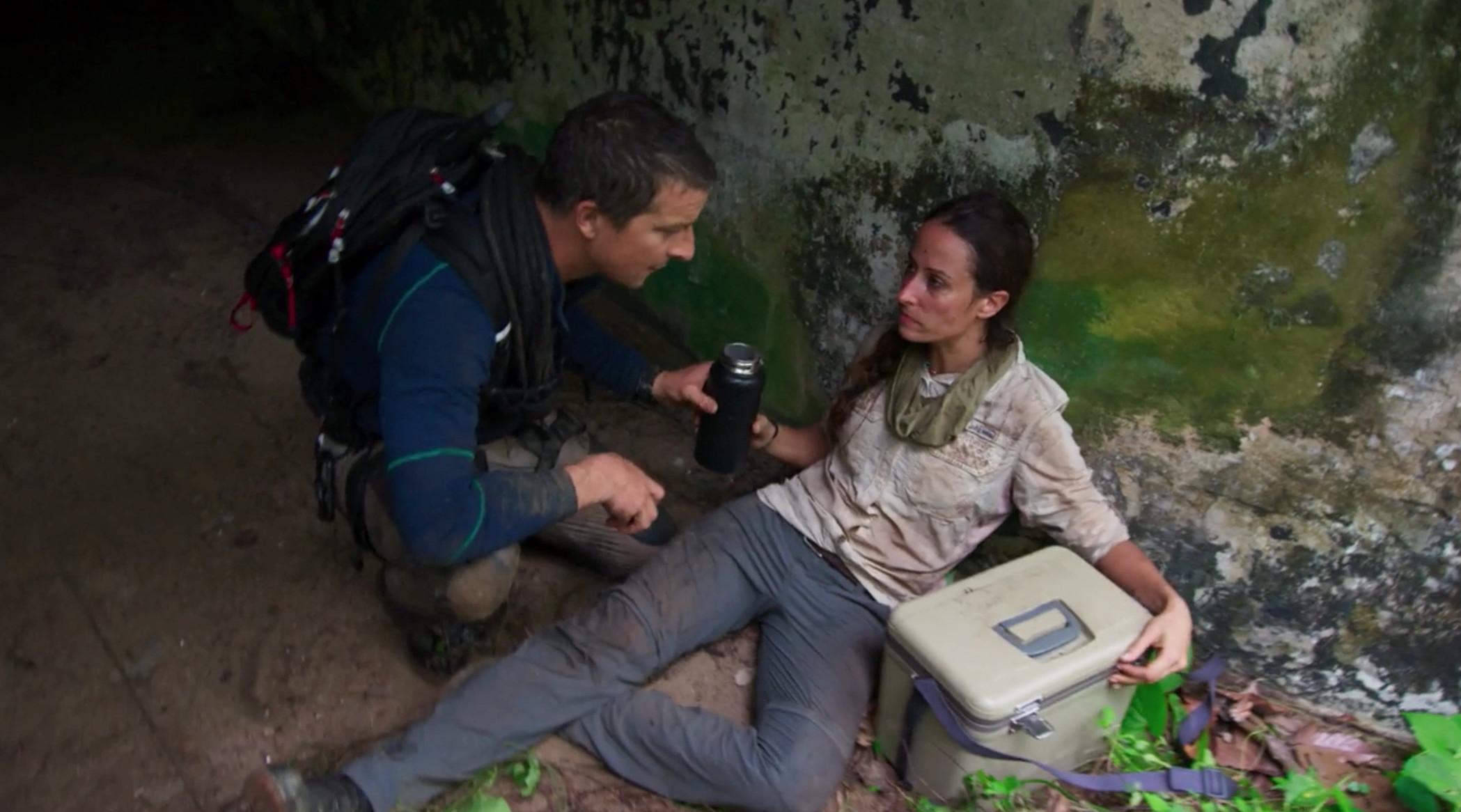
Sure, her clothes and face are a bit muddy, but this doesn’t look like someone on the brink of death. (Again, not that I want anyone to die!) While receiving some water, Dr. Ramos took merely a few casual sips; she seemed perfectly hydrated. If You vs. Wild was gonna set up some faux narratives for us to follow, they could’ve at least put in the effort to make it seem somewhat realistic. To wit: We grabbed the malaria vaccines from Ramos and were given a new mission to bring them to the village. We were basically ordered to leave Ramos, and we didn’t ever see her again. (But, like, I’m sure she was safe with a bottle of Aquafina.)
On the bright side, I finally made a dumb decision that did a little more than inconvenience Bear. I made him use a rope to cross over a narrow crevice instead of rappelling down. In the process, my man lost his precious machete.

Sorry, Bear, I had to do it for content. But aside from that, Bear deserves credit for his persistence. With every following choice, I tried to do something to bother him, and he improvised. Cutting through painful sawgrass over a mangrove swamp, he used a stick to avoid the cuts. A jaguar could be nearby? Instead of covering himself in mud to mask his scent, which seemed more logical, I made Bear cover himself in branches and look like a sentient shrub.
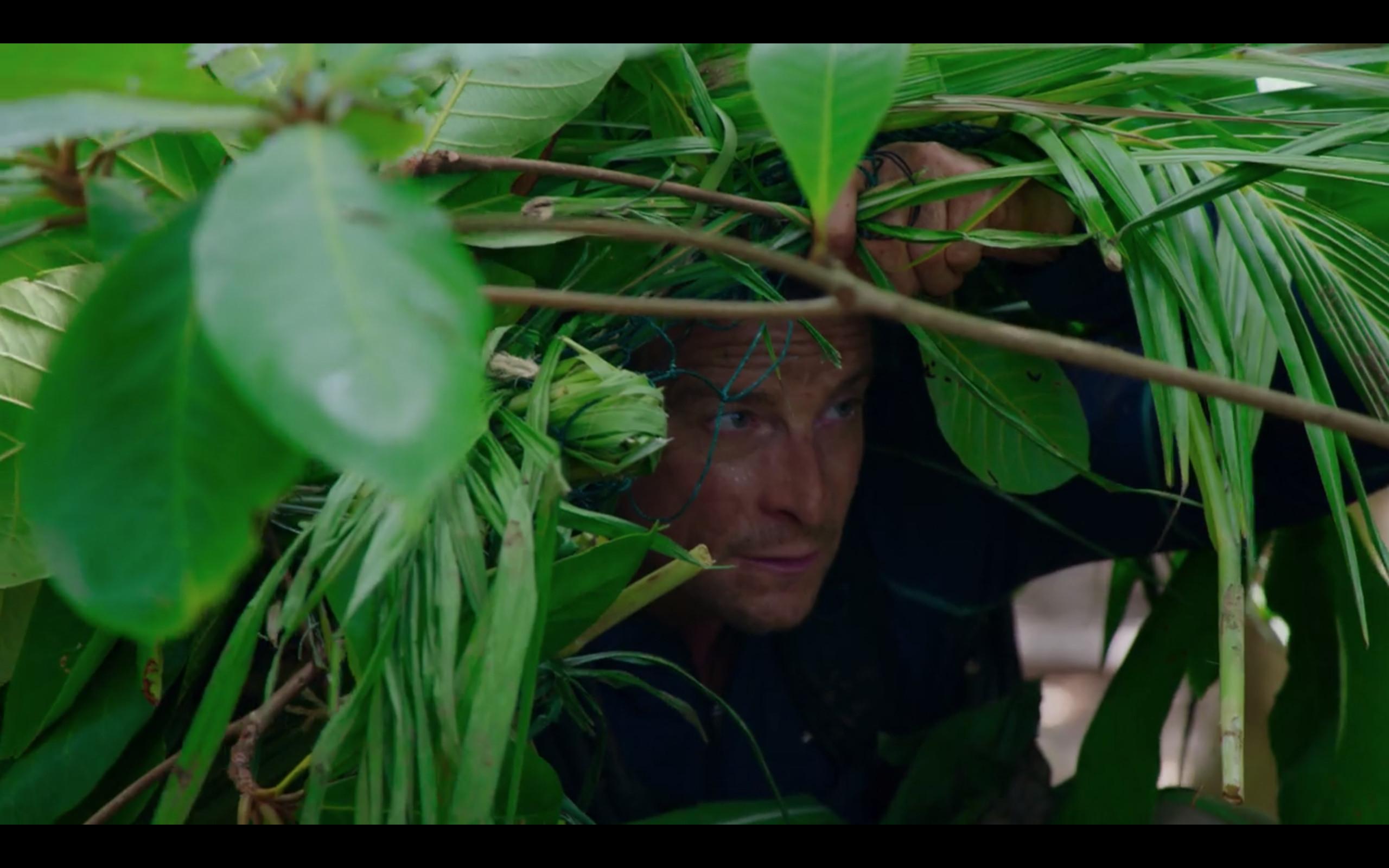
But perhaps this is ultimately a good thing: If I had my way, the villagers wouldn’t have gotten their malaria vaccines. We may have lost a machete, but we still easily handled the mission. I’m not mad, just a bit disappointed.
Episode 3: “Searching for a Saint Bernard”
We already established that You vs. Wild was setting up fake scenarios—even so, I couldn’t help but feel compelled to get this mission right. Bear Grylls was in the Swiss Alps, and we needed to rescue a Saint Bernard named Dana, who got lost from her group rescuing some people. Bear even held up a photo of Dana, daring you to take this thing seriously for the sake of a very good dog.
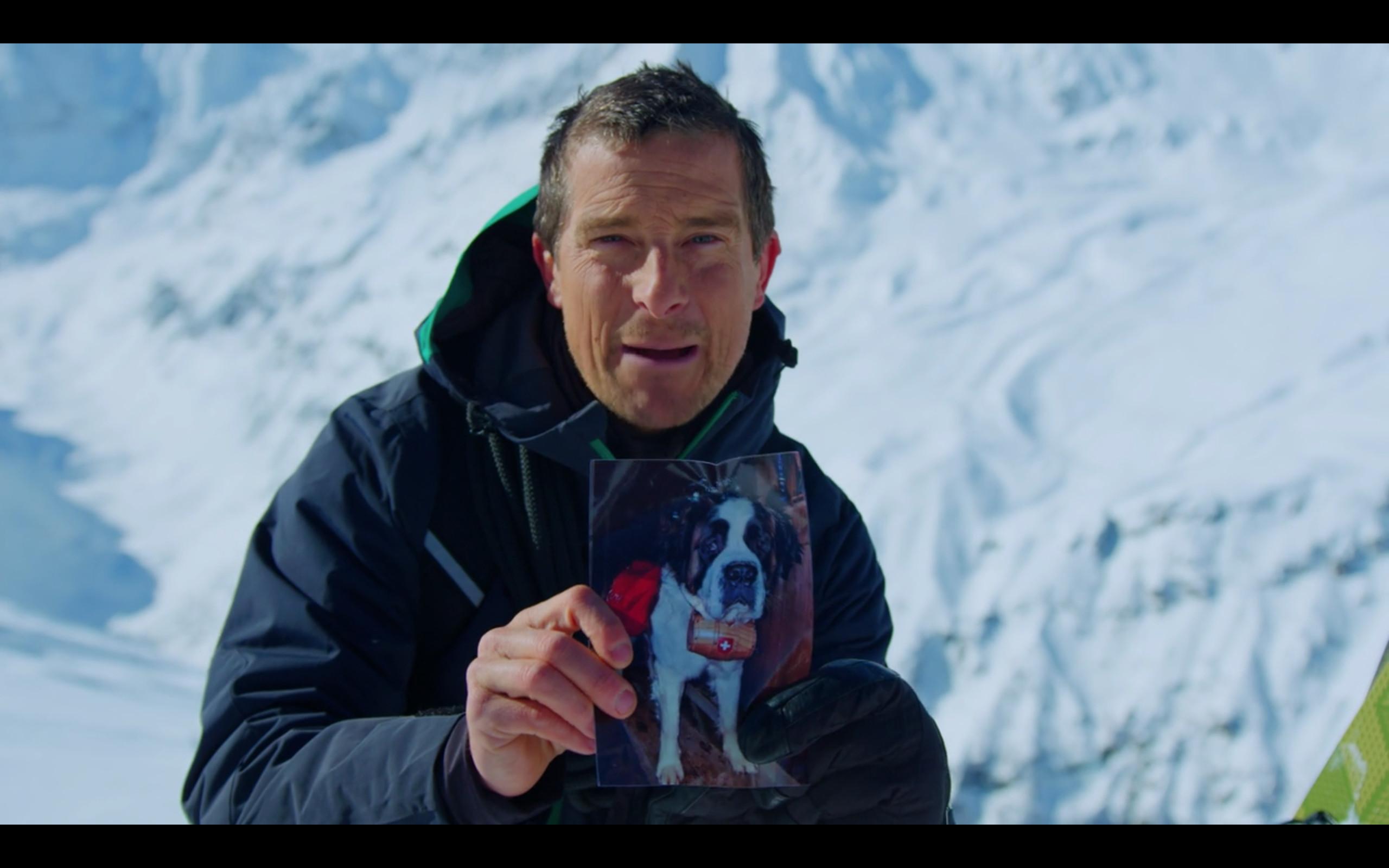
I was at odds with myself. My heart was begging me to take all the smart choices and get Dana to safety; my brain, meanwhile, kept reminding me that none of this was actually happening and that the real Dana was somewhere safe. I ultimately sided with my brain, and when Bear made it to a frozen lake, I made him step across the surface instead of dragging himself across like a seal (a slower but safer method of crossing an ice lake). Sure enough, the ice broke.
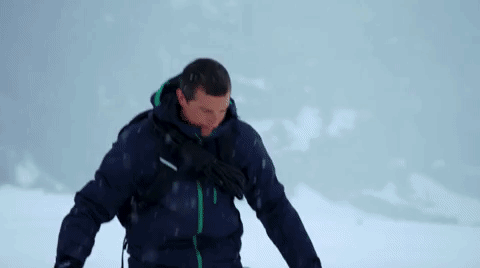
Bear—despite being submerged in freezing cold water—calmly told me this decision would lead most people to drown or die of hypothermia, and that it was imperative he get rescued sooner rather than later. From there, he didn’t turn into Jack from Titanic, but the series did make me restart from the frozen lake situation. From there I could continue to force Bear to plunge into the icy waters in an endless loop of chilling stupidity, or I could pick the other, correct option and continue the adventure. I didn’t have all day, so I begrudgingly chose the latter.
Soon after, following Dana’s tracks, Bear stumbled across some poop from an actual bear. He delightfully detailed the contents of the poop; he said he was doing this to ensure the bear didn’t actually eat Dana, but I know the truth: Bear loves this (literal) shit. I was then presented with another decision: Noting that there were little undigested nuts in the bear poop, Bear said he could eat them if he gave them a rinse, or we could try to forage for food elsewhere. “How’d I know you were gonna pick this option?” Bear cheekily responded before chowing down on his poop nuts.
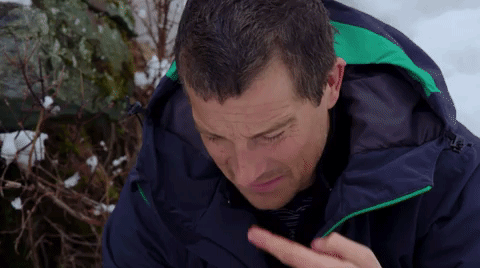
I’d love it if Netflix threw out some You vs. Wild stats like they did with Bandersnatch, revealing that 97 percent of their users forced Bear Grylls to eat poop. There are probably some psychological studies to be done about the disturbing impulses of Netflix users controlling the actions of another person, but mostly I was just glad the series let me put something strange in Bear’s mouth. (Psychologists, come at me.) And guess what? It worked out! With the helpful energy from the nuts, Bear rescued Dana, and we were blessed with this wholesome image before the next adventure:

Episode 4: “Lost on Snow Mountain”
For the fourth installment, we were still on an icy terrain, but instead of a rescue mission, Bear had to survive 24 hours in the tundra—and with your sadistic choices—until a rescue helicopter arrived. I was given the initial choice to do “static” survival, meaning Bear would stay in the same area and try to make the most of his surroundings, or “dynamic” survival, which involved moving and taking challenges on along the way. “Dynamic” sounded more entertaining and potentially absurd, so that’s what we did.
We were tested with another food option: Bear could either eat some mushrooms or try his luck with tree buds. Mushrooms provide more energy, but it was unclear whether this mushroom was poisonous. It was a risk with a greater reward—and admittedly, an even greater potential for death—so I went with it. Big mistake.
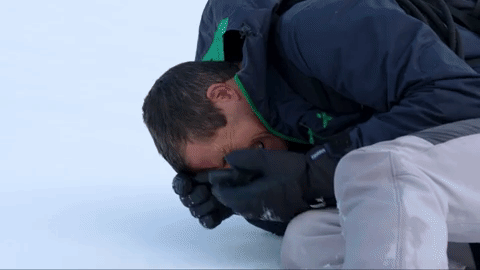
Sorry, Bear. I’ve watched Phantom Thread multiple times; I should’ve seen this coming. You just seemed like a Hungry Boy.
Mushroom stomach cramps—which did force another restart—aside, Bear made it through the 24 hours relatively unscathed. However, I did make him rappel down a cliff by tying his rope to a sharp rock instead of using his water bottle lodged into the snow, and the rope nearly broke. “We got lucky this time,” Bear said, addressing me, as I pondered the depths of depravity within my soul.
I’m preparing stir-fry tonight, and the dish will not feature mushrooms.
Episode 5 and 6: “A Venomous Adventure”
Ditching the snow for some scorching deserts, it was time for another rescue operation. A small plane had crashed, and we needed to gather all the precious antivenom from the crash site. After choosing to skydive into the site—an objectively cooler option than a boring helicopter landing—I had Bear descend into a canyon and make his way through its narrow confines. (In my defense, it looked more cinematic than crossing the rocks with rope, and he was being shaded from the sweltering heat of the sun.) But before things got full 127 Hours, the poor guy got stung in the neck by a scorpion.
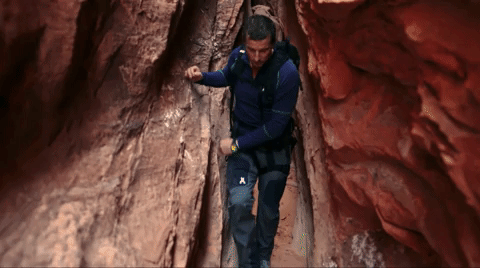
A common refrain when it comes to scorpions: the smaller the animal and its pincers, the deadlier the venom is. Bear casually informed me that the venom could soon restrict his breathing since the sting was right at his neck and that he’d need to get himself rescued. It’s incredible: Once again, Bear was caught in a deadly situation based on my terrible decision-making, and he was the one encouraging me to persevere with another approach. His composure and charisma were disarming; it was like he was playing reverse psychology with you, knowing that you just want to try to kill him through your Netflix account. It was time to start over and avoid that narrow passageway.
Let me know if you’re sensing a theme: Before long, I had to make a choice for Bear’s next drink. (Tragically, the situation wasn’t desperate enough for pee, it seems.) The choice was either cutting through a prickly barrel cactus for some cactus water or peeling through some comparatively easy fire sticks. Despite the name, fire sticks are safe to drink from—however, they also closely resemble a plant from the Euphorbia family, which can be legitimately deadly to ingest. Taking the risk with the fire stick, I was horrified to discover Bear instead cut his way into a Euphorbia plant. The stuff got onto his hands—and within minutes, this is what they looked like. (Warning, this is a bit graphic.)
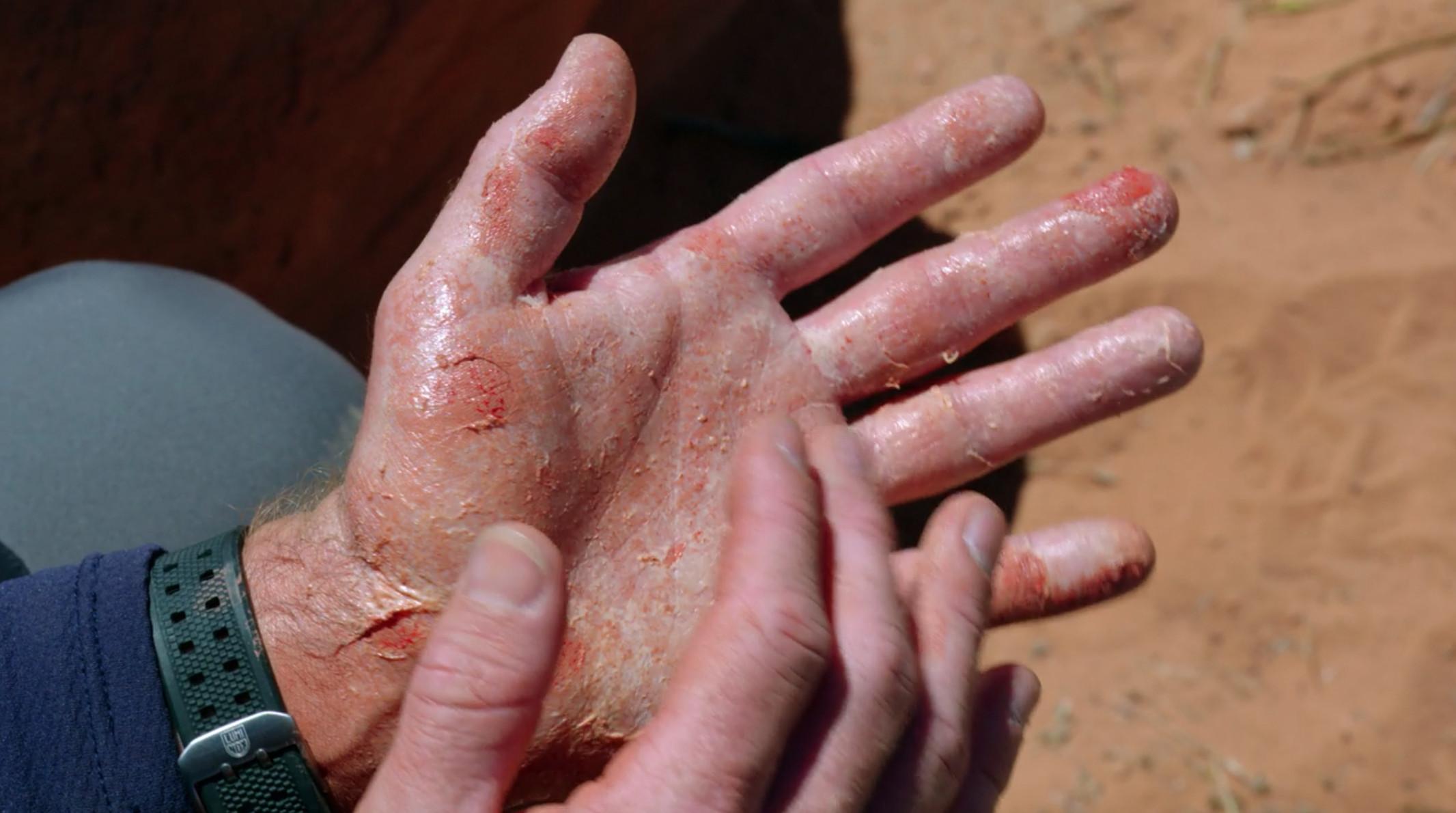
This was legitimately horrifying; imagine the damage it would do if he drank that stuff. I began feeling guilty about the peril I was putting Bear through, but again, my rational brain reminded me that—regardless of the choices I made—Bear still had to stick his hands through that vicious plant for the purposes of the show’s interactivity (and also that I hadn’t recently read a story with the headline: “Bear Grylls Dies Filming Netflix Show”). One successful cactus chug later, we were back on the antivenom trail.
Unfortunately, the antivenom vials were destroyed in the crash—I mean, go figure, it’s a plane crash?—and our next mission was to collect the antivenom ourselves. That meant Bear Grylls needed to find and extract venom from a scorpion, a tarantula, and a rattlesnake. Instead of going for an oasis, I chose, in Bear’s own words, the “dark, dank” abandoned mineshaft. It was filled with nasty water and cobwebs, and we ultimately found a scorpion for our venom collection. But it wasn’t until we discovered a hissing rattlesnake in a nearby cave that the decision-making got more perilous. There were two ways to approach the rattlesnake for venom extraction: By using a stick to prevent its head from striking us, or by grabbing the snake by its tail. Grabbing a venomous snake by its tail is Darwinism at its finest, so that’s exactly what I made Bear Grylls do. It went about as well as you’d expect.
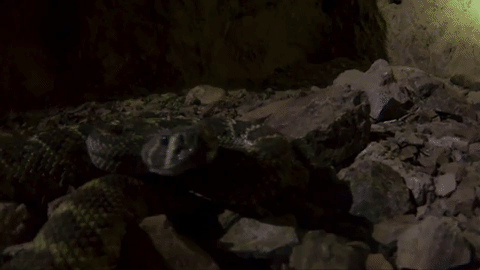
“That’s a high-risk one, I can tell you!” Bear giddily explained before having his hand pierced by rattlesnake fangs. This choice, obviously, forced another restart—and once the venom was collected, so ended our journey. Interestingly, I never ended up getting the tarantula venom, which I’m assuming means there are a few scenarios in this adventure where you can collect more or less venom depending on which choices you make. Evidently, good things happen if you make good decisions and don’t, say, force Bear Grylls to grab a rattlesnake by the tail.
Episode 7: “Land of the Dragons”
Its title portends dragons, but this episode was another 24-hour adventure that was heavy on wolves. But first, there was another eating challenge. Bear needed to muster the strength to climb a cliff, and he could either eat some limpets (small, oyster-like critters) or gutweed. The limpets provided more calories and energy, but—stop me if you’ve heard this one before—there was a risk inherent to eating them because they could ingest harmful bacteria from the ocean. Basically, whatever’s in their stomach could destroy Bear’s stomach. Gutweed, meanwhile, is totally safe; you just need to eat a lot of it.
You know I had to choose the limpets. And once again, Bear was soon in dire need of extra-strength Tums.
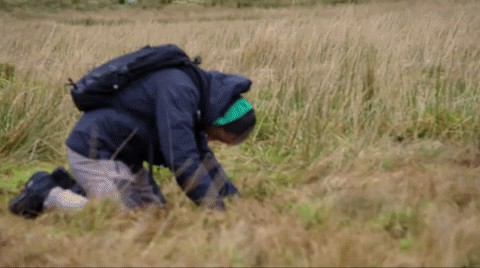
I did not expect You vs. Wild to turn into a perverse, nature-centric spin on Chef’s Table, but the quest for questionable sustenance provided the most consistent peril on Bear’s adventures. I’m legit worried this show has irreparably damaged the man’s digestive tract.
The next crucial decision involved shelter: choosing between a forested area and a cave. It was a tough call to make ... until Bear said the cave posed a risk of encountering an animal that was also using it for shelter. Thus, it was cave time. As promised, there was a wolf inside—and disturbing its nap meant Bear had to be chased all the way to an early extraction point. While that sounds intense, the sad truth is there was only one wolf, and this whole scenario seemed to be fabricated by the show. I mean, this “escape” looks like the lesser cousin of that Liam Neeson movie.
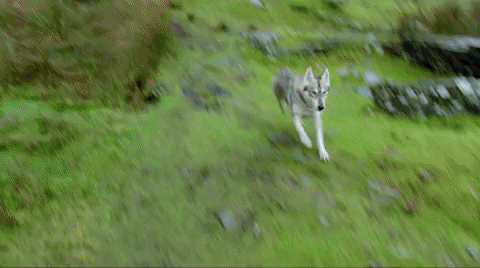
If you were to restart from the cave and continue the journey, you’d eventually encounter the same lone wolf—aren’t these pack animals?—and be tasked with choosing between fending it off with a serrated stick or, once again, trying to run away from it. Just to reiterate: I don’t actually want Bear to get mauled by a wolf, or make him kill a wolf with a makeshift spear. But I wanted something to happen. If you wanna have any dramatic stakes whatsoever you gotta fight an entire pack of rabid wolves and shed a little blood sometimes, right?
Episode 8: “Myth of the Abandoned Mine”
Unfortunately, the last adventure in You vs. Wild felt the most phoned in. For starters, one of the earliest decisions to make in the European wilderness involved … the precarious choice of procuring a sheep for warmth by either luring it or chasing it. We’re far from the rattlesnake venom now.
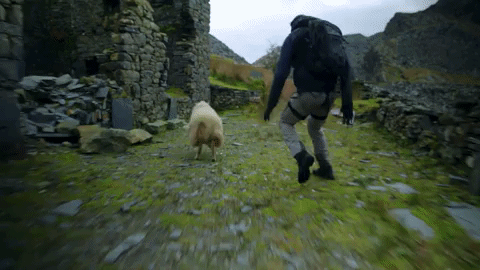
At least Bear was rewarded with a woolly snuggle. After all the horrible choices and stomach ulcers I made Bear go through, giving the man a moment to cuddle with a docile animal felt weirdly appropriate. The following image has cleared my skin, replenished my soul, nourished the Midwest’s crops, lowered sea levels, etc:

But as far as high-stakes adventuring goes? This was a tame outing. Even the dreaded customary food option—does Bear Grylls chow down on earthworms or some edible bark?—left a lot to be desired. I chose the worms—“Of course you picked the worm!” Bear says with a twinkle in his eye, possibly evoking sadness—and the little thing was halfway down his throat when Bear faked me out and refused to eat it. In fairness, he did this because, like the limpets, whatever the worms had ingested could mess up his body from the inside. But I did feel a twinge of anger course through my body as I watched my puppet finally gain autonomy.
Watching other Bear Grylls shows, there’s always the temptation to wonder how you’d fare in a certain survival situation. While You vs. Wild does not totally satisfy that impulse—also, I was mostly interested in finding out whether I could actually kill Bear Grylls in my playthrough—it’s probably the closest most people will get to these actual scenarios. Even from the comfort of your sofa, there’s a palpable tension derived from the gantlet you put this chipper British survivalist through—especially when the skin from his hands starts peeling off like they were dipped in a vat of acid.
You vs. Wild is another interesting entry in Netflix’s interactive canon, even if it doesn’t have the same complexity of choice as Bandersnatch. But while the false narratives and fabricated scenarios with a wolf left a lot to be desired, the most damning thing against the series was the fact that it lacked the most essential ingredient of all: My playthrough did not feature any options for Bear Grylls to drink his own pee. That’d be like doing a whole season of Riverdale and never showing K.J. Apa’s abs. Netflix, here’s a completely scientific stat to consider: 100 percent of users would prefer having the option of Bear Grylls drinking his urine. It’s a must for You vs. Wild Season 2.

